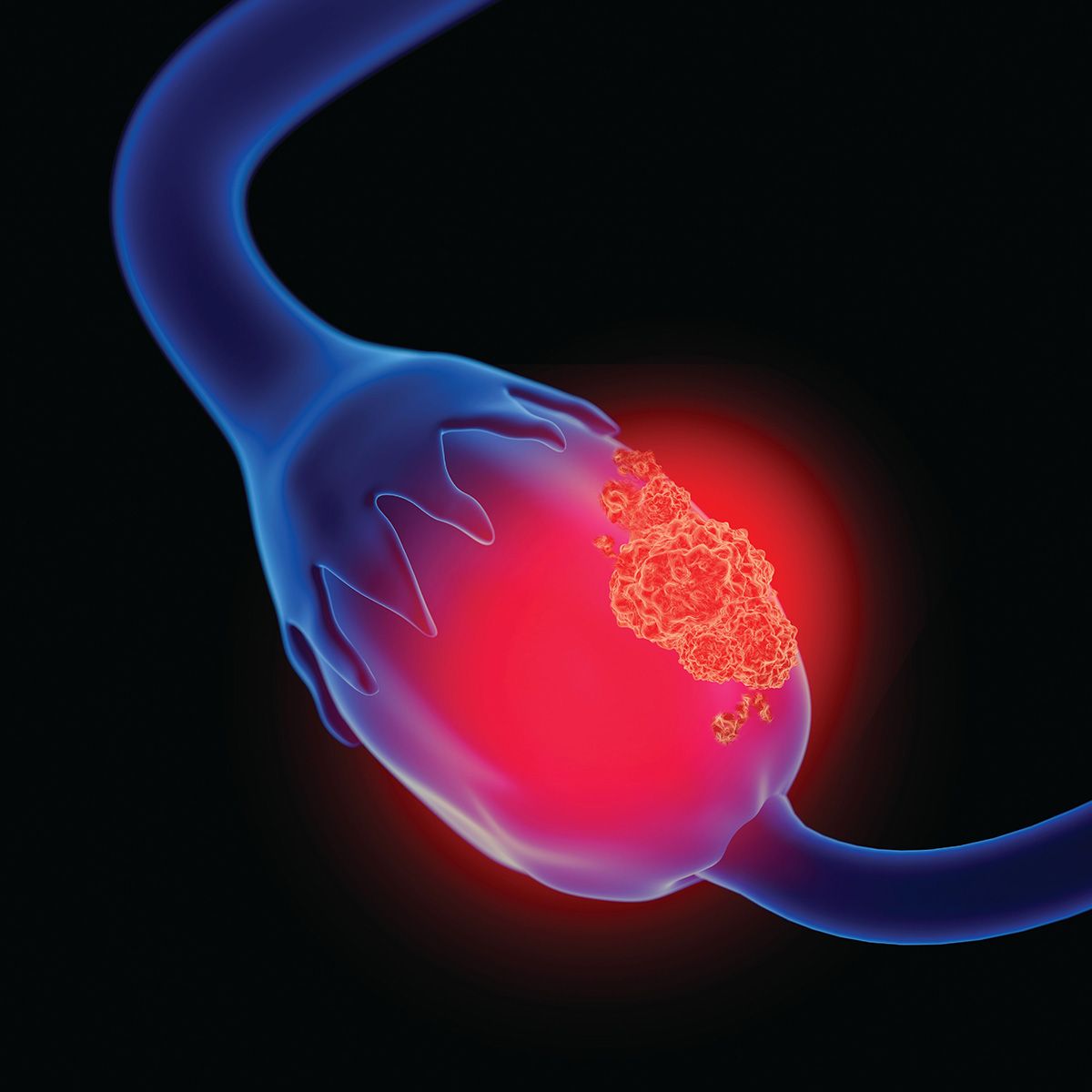Article
PARP Inhibitors Continue to Impress in the Ovarian Cancer Space
Author(s):
There are now three PARP inhibitors approved for the treatment of ovarian cancer, improving outcomes of many of the women who take them.
There are now 3 FDA-approved PARP inhibitors in the maintenance setting — Zejula (niraparib), Lynparza (olaparib), and Rubraca (rucaparib) — for patients with ovarian cancer who are in a complete or partial response to platinum-based chemotherapy.
The April 2018 approval of Rubraca was based on the results of the phase 3 ARIEL3 trial, in which 10 patients saw complete responses with Rubraca compared with 1 patient on placebo, leading to an overall response rate of 18 percent.
Results showed that the median progression-free survival (PFS) in the overall study population was 10.8 months with maintenance Rubraca versus 5.4 months with placebo. Moreover, patients with germline or somatic BRCA mutations saw a more impressive median PFS of 16.6 months versus 5.4 months, respectively. This subset of patients experienced a 77 percent reduction in the risk of progression or death with Rubraca versus placebo.
“PARP inhibitors have certainly shown a statistically significant and very meaningful impact on PFS in patients with platinum-sensitive recurrent ovarian cancer in the maintenance setting without any deleterious impact on quality of life,” said Lyndsay Willmott, M.D. “In general, PARP inhibitors are well tolerated. The percentage of patients who have to come off the medication due to toxicity is relatively low.”
Though PARP inhibitors have been shown to confer a benefit in PFS, they are not immune to resistance. In addition to understanding the mechanism of action behind these inhibitors, research now has a vested interest in understanding their mechanisms of resistance.
In an interview during the 2018 OncLive® State of the Science Summit™ on Ovarian Cancer — just prior to the FDA’s approval of the maintenance indication for Rubraca — Willmott, a gynecologic oncologist at Arizona Oncology, discussed the use of PARP inhibitors in patients with ovarian cancer and detailed the mechanisms of resistance that have been identified so far.
What are the differences among the three approved PARP inhibitors in ovarian cancer?
The first commercially available PARP inhibitor is Lynparza. The current indications for Lynparza are in treatment and maintenance. The treatment indication is for patients who have had three prior regimens and who have a germline BRCA mutation. The maintenance indication is for patients with ovarian cancer who had a platinum-sensitive recurrence who have had at least a partial response to their chemotherapy.
The second inhibitor is Zejula; that has a maintenance indication for patients with platinum-sensitive recurrent ovarian cancer with at least a partial response, as well. The third is Rubraca, which has a treatment indication after at least two prior regimens. Those patients need to have either a somatic or germline BRCA mutation. [Editor's Note: This interview took place prior to the April 2018 FDA approval of Rubraca in the maintenance setting].
For the maintenance indications, it does not matter what their BRCA status is. Every patient is eligible as long as they meet the platinum-sensitive recurrent parameter.
What has the impact of these PARP inhibitors been in the maintenance setting?
Clinical trials have demonstrated PFS improvement in all three drugs. The clinical trials showed statistically significant benefit in PFS with impressive hazard ratios in all three drugs. We can’t say anything about overall survival; the studies weren’t designed that way, nor have the events accrued yet to report on that. However, these drugs certainly have improvement over placebo from a PFS standpoint.
What mechanisms of resistance have been identified?
There is a really good article that was published in Gynecologic Oncology at the end of 2017 looking into this issue. There is this idea of reversion mutations, which means that tumor cells can revert to BRCA wild-type and can confer resistance to PARP inhibitors. There can also be upregulation of other types of cell cycle repair such as nonhomologous end joining, which is a type of alternative repair in cells with BRCA defaults. Halting the replication fork can also lead to PARP inhibitor resistance.
There can be other acquired types of resistance, such as increased efflux of the PARP inhibitor out of the cell, so that it’s no longer available for its mechanism of action. PARP inhibitors can sometimes exploit these abnormalities in cell cycle regulation. If we can alter some of these things, with treatments such as cyclin-dependent kinases, that may enable increased PARP activity. Certainly, a number of mechanisms are being evaluated to see if we can shut down or turn up other systems to allow the inhibitor to remain effective.
Are there next-generation PARP inhibitors being studied?
Other PARP inhibitors have certainly been evaluated in clinical trials that looked at their use with cytotoxic chemotherapy. The viability of those PARP inhibitors in the current marketplace is relatively low. However, yes—there are other PARP inhibitors that may or may not show benefits. That remains to be seen.
What other clinical trials have explored combinations of chemotherapy and immunotherapy?
That’s the next step in research. The idea behind combining PARP inhibitors with checkpoint inhibitors in the maintenance setting is to see if we can portend a better PFS. Chemotherapy plus PARP inhibitors is a little bit more challenging. There is a lot of toxicity, which makes simultaneous administration prohibitive. That’s where the idea of maintenance therapy came about.
What are the main points of your presentation?
Many toxicities are well managed with either supportive medications or dose reductions. This makes for an excellent maintenance setting because patients don’t want to feel ill when they have no evidence of disease. They want to be able to live their lives. These well-tolerated oral PARP inhibitors allow them to do that.
Are PARP inhibitors being used in other fields?
There have been questions about whether that could be evaluated. Lynparza carries an indication in BRCA-associated breast cancer. If there are other tumor types with similar errors in homologous repair, it could potentially be useful. A number of tumors are submitted for tumor profiling, and sometimes you will see errors in the homologous recombination pathway that come up on profiling. That may warrant its off-label use.





